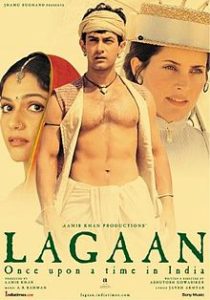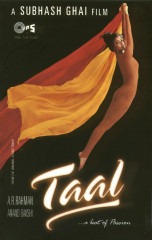When Roger Ebert died Thursday at the age of 70, the world lost one of its most thoughtful cultural writers. Unlike many American film critics, Ebert took Bollywood seriously as a genre, frequently featuring pieces on Hindi films (often written by guest contributors) on his sites and posting recommendations from readers.
Ebert himself always said he had a soft spot for India. From the introduction to his review of “Patang”:
I visited India only once, for less than two weeks, but I left a part of my heart there. I can’t say I know it well, but I know how it made me feel, and it seemed impossibly exotic and absolutely comfortable at the same time: I was curiously at home in a strange land.
As a tribute to Ebert and his storied career, here are five of his best quotes about Indian films.
1. On Bollywood (from his June 2002 review of “Lagaan”):
The most charming aspect of most Bollywood movies is their cheerful willingness to break into song and dance at the slightest pretext; the film I saw was about a romance between a rich boy and a poor girl, whose poverty did not prevent her from producing back-up dancers whenever she needed them.
2. On “Lagaan” itself:
…[M]ost readers of this review have never seen a Bollywood
movie and don’t want to start now. That will be their loss. This film is like nothing they’ve seen before, with its startling landscapes, architecture and locations, its exuberant colors, its sudden and joyous musical numbers right in the middle of dramatic scenes, and its melodramatic acting (teeth gnash, tears well, lips tremble, bosoms heave, fists clench). At the same time, it’s a memory of the films we all grew up on, with clearly defined villains and heroes, a romantic triangle, and even a comic character who saves the day. “Lagaan” is a well-crafted, hugely entertaining epic that has the spice of a foreign culture.
3. After watching “Chadni Chowk to China”:
I would need to see [Akshay] Kumar in something other than this to understand his fame. He comes across here as a cross between Jerry Lewis and Adam Sandler, but less manic than Jerry and not as affable as Sandler. What I can understand is that his co-star, Deepika Padukone, abandoned a promising start as a badminton champion to become a model and actress. She is breathtaking, which of course is standard in Bollywood, where all the actresses are either breathtaking or playing mothers.
Now comes a scene of such peculiar eroticism that you will have to take my word for it — it was sexy. At a reception, the heroine scratches her chin. The hero, across the room, scratches his chin. The heroine touches her nose. The hero touches his nose. She brushes back her hair. He brushes back his hair. What fills him with maddening desire is that she does not reveal by even a flicker of an eyelid that she notices him doing this. She is a good girl, and will not make eye contact, even though they have held hands.
5. Reviewing Satyajit Ray’s “The Big City”:
That is why I have so much trouble approaching Ray’s films as “foreign.” They are not foreign. They are about Indians, and I am not an Indian, but Ray’s characters have more in common with me than I do the comic-strip characters of Hollywood.
Ray’s people have genuine emotions and ambitions, like the people next door and the people in Peoria and the people in Kansas City. There is not a person reading this review who would not identify immediately and deeply with the characters in “The Big City.”















Thank you for sharing this, Lakshmi. Roger Ebert was one of a kind and will truly be missed.